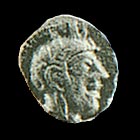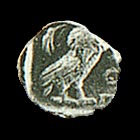What set classical Athens apart from almost all other
Hellenic poleis was its institution of public
pay. By this we mean the payment of a specific sum
for serving in various state posts. The best-known types
of pay were:
a) jury pay: Pay to judges and juries. This dates
from the time of the reforms of Ephialtes in 462/1 B.C.
Kleon set it at three obols. After the costly campaign in
Euboea in 349/8 B.C., the Athenian state was no longer
able to continue providing the previous amounts.
b) council pay: This was paid down for those
taking part in the Council. It was a kind of compensation
(made, in theory, because they were unable to attend to
their jobs) and it amounted to the sum of five obols,
plus an extra obol for people serving on the presidential
board.
c) assembly pay: By this we mean payment for
taking part in the People's Assembly. This measure was
introduced by one Agyrios. Originally the amount was one
obol; but it was later increased, by Heracleides of Clazomenai,
to two obols, and ultimately, again by Agyrios, to three
obols. |

 |



